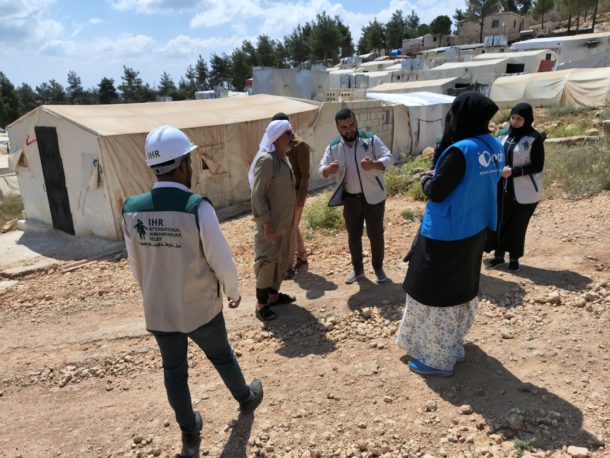The aim of the project is to support the residents of the camps and respond to the specific needs of those who have had to abandon their homes. These camps are under-supported due to their difficult location in mountainous region and in an area at risk of so-called flash floods. Considering that they are also situated in one of the coldest regions of north-west Syria, our priority is to help families that are particularly affected by the crisis and who have no access to basic means of protection against difficult weather conditions. Without assistance they may be unable to properly protect their children, elderly and women during the cold months of the year.
The project will focus on education, water and sanitation, livelihoods and protection activities with the aim of addressing the needs related to severe winter, floods and threats to internally displaced families, especially those most exposed to the impact of the humanitarian crisis.
Additionally, the project involves rebuilding two family centres that were damaged in the earthquake. These centres provide protection and support to families in Sharan and Afrin.
Reconstruction and livelihood activities
PAH plans to reorganize and modernize existing stormwater drainage infrastructure as well as to develop, reinforce it by cleaning existing canals and expanding the network. The aim is to improve drainage throughout the area to minimize the risk associated with heavy rain and flooding. Another important item on the agenda will be the installation of lighting on roads and squares, including solar poles, to increase safety in the camps. PAH will also finance insulation on the roofs of temporary shelters in the camps, as well as the plastering of the external walls of bathrooms and kitchens in tents and other types of shelters. An additional action carried out in the cities of Sharan and Afrin outside the camps will be the renovation of family centres to restore their full capacity.
Water and sanitation activities
The project involves the construction of a groundwater tank with the capacity of 48 cubic meters and financing of minor repairs to the existing water station in the vicinity of the camps to ensure a constant supply of water. It is also planned to provide the necessary materials and cover the operating costs associated with the operation of a generator pumping water from the well in the water station. This encompasses furthermore regular water quality tests and maintenance of the entire water supply system, including networks, pipelines, wells, generators and electrical equipment. This initiative is particularly important considering the long period of operation and the load on the systems. Additionally, activities will be carried out in the field of hygiene promotion and prevention of abuse and sexual exploitation in both camps.
Education and protection activities
In one of the camps there is a school educating about 525 children aged between 6 and 15. It will undergo necessary renovations and reconstruction. PAH will also provide remedial education for children from the camps to facilitate their return to school and enable the re-enrolment of children who have dropped out. The IHR team will conduct didactic classes in Arabic, helping children master basic reading and writing skills. Furthermore, recreational activities for children in the form of systematic games and creative activities, such as theatre, art, music and handicrafts will be organized at the school. The aim of the classes is to increase the sense of stability among the children, develop positive coping mechanisms and enable them to safely express emotions and discuss their problems.
Protection activities
PAH and IHR will organize awareness-raising sessions on child protection dedicated to children, parents and guardians. They will cover topics such as child labour and marriage, children’s rights and violence against children. Parents and guardians will have the opportunity to take part in parenting skills sessions devoted to such topics as supporting children in crisis situations and positive communication with children and adolescents.



